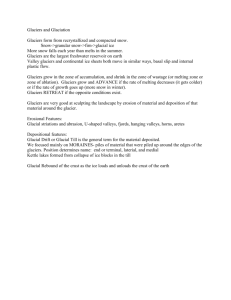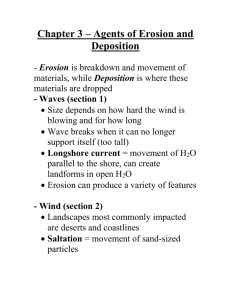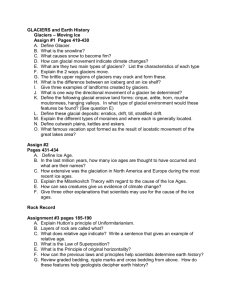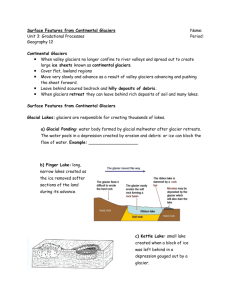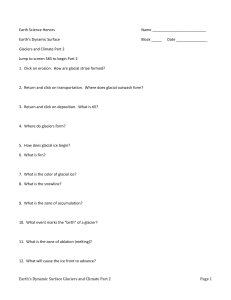Glaciers
advertisement
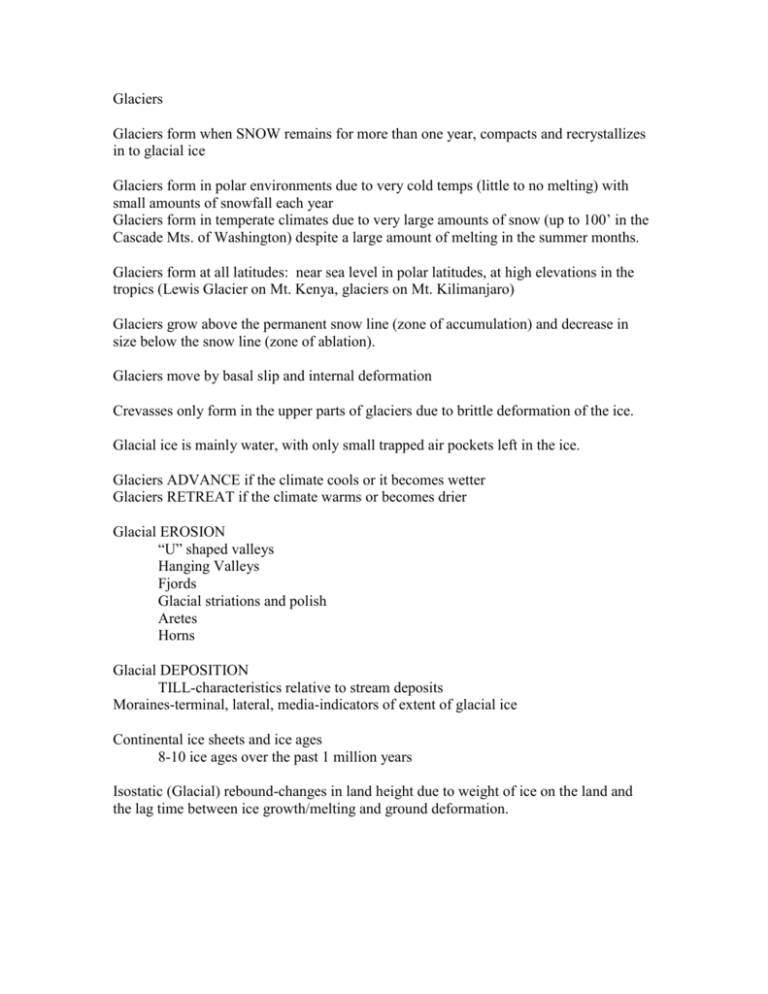
Glaciers Glaciers form when SNOW remains for more than one year, compacts and recrystallizes in to glacial ice Glaciers form in polar environments due to very cold temps (little to no melting) with small amounts of snowfall each year Glaciers form in temperate climates due to very large amounts of snow (up to 100’ in the Cascade Mts. of Washington) despite a large amount of melting in the summer months. Glaciers form at all latitudes: near sea level in polar latitudes, at high elevations in the tropics (Lewis Glacier on Mt. Kenya, glaciers on Mt. Kilimanjaro) Glaciers grow above the permanent snow line (zone of accumulation) and decrease in size below the snow line (zone of ablation). Glaciers move by basal slip and internal deformation Crevasses only form in the upper parts of glaciers due to brittle deformation of the ice. Glacial ice is mainly water, with only small trapped air pockets left in the ice. Glaciers ADVANCE if the climate cools or it becomes wetter Glaciers RETREAT if the climate warms or becomes drier Glacial EROSION “U” shaped valleys Hanging Valleys Fjords Glacial striations and polish Aretes Horns Glacial DEPOSITION TILL-characteristics relative to stream deposits Moraines-terminal, lateral, media-indicators of extent of glacial ice Continental ice sheets and ice ages 8-10 ice ages over the past 1 million years Isostatic (Glacial) rebound-changes in land height due to weight of ice on the land and the lag time between ice growth/melting and ground deformation.

